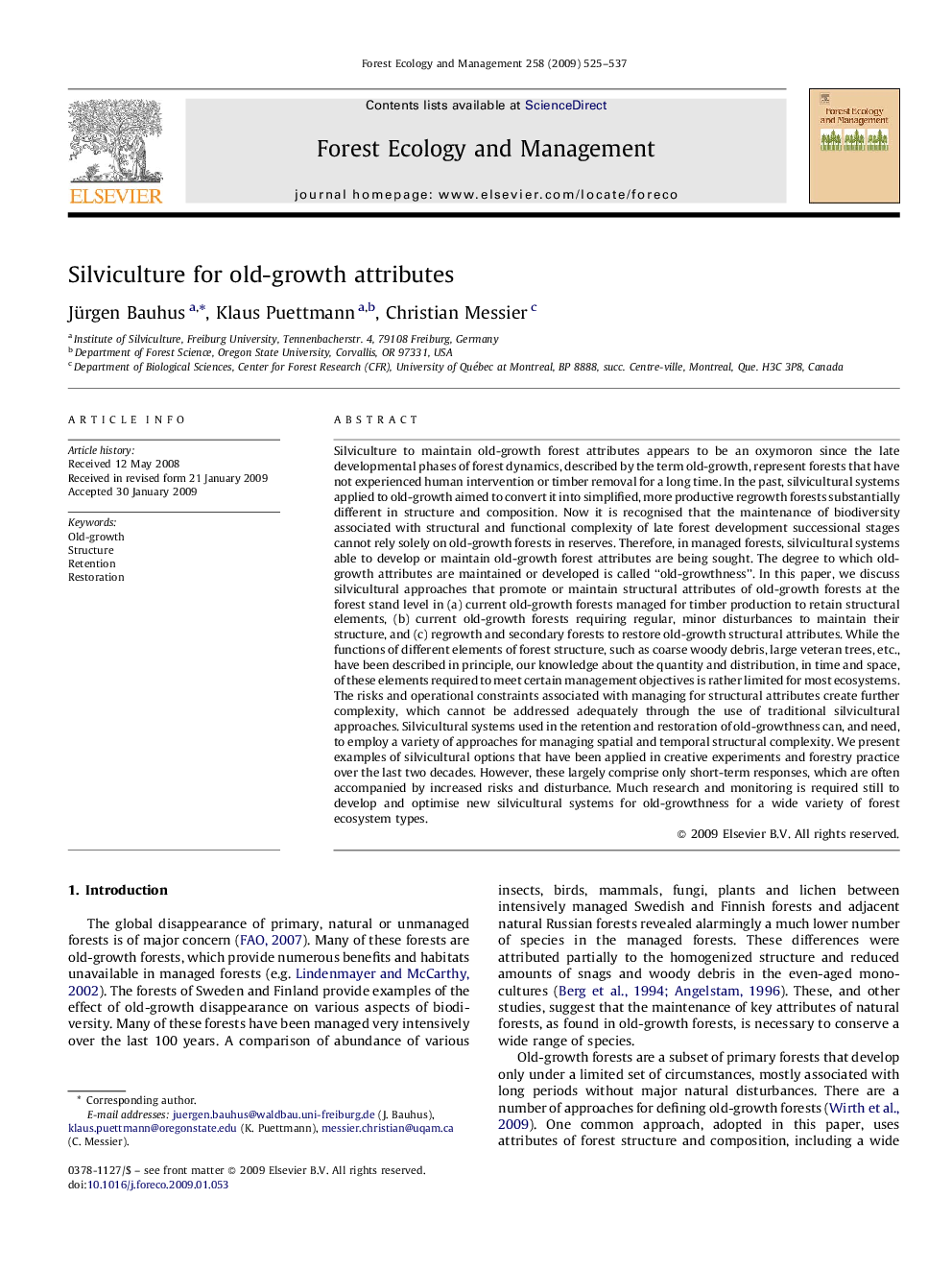| کد مقاله | کد نشریه | سال انتشار | مقاله انگلیسی | نسخه تمام متن |
|---|---|---|---|---|
| 88663 | 159313 | 2009 | 13 صفحه PDF | دانلود رایگان |

Silviculture to maintain old-growth forest attributes appears to be an oxymoron since the late developmental phases of forest dynamics, described by the term old-growth, represent forests that have not experienced human intervention or timber removal for a long time. In the past, silvicultural systems applied to old-growth aimed to convert it into simplified, more productive regrowth forests substantially different in structure and composition. Now it is recognised that the maintenance of biodiversity associated with structural and functional complexity of late forest development successional stages cannot rely solely on old-growth forests in reserves. Therefore, in managed forests, silvicultural systems able to develop or maintain old-growth forest attributes are being sought. The degree to which old-growth attributes are maintained or developed is called “old-growthness”. In this paper, we discuss silvicultural approaches that promote or maintain structural attributes of old-growth forests at the forest stand level in (a) current old-growth forests managed for timber production to retain structural elements, (b) current old-growth forests requiring regular, minor disturbances to maintain their structure, and (c) regrowth and secondary forests to restore old-growth structural attributes. While the functions of different elements of forest structure, such as coarse woody debris, large veteran trees, etc., have been described in principle, our knowledge about the quantity and distribution, in time and space, of these elements required to meet certain management objectives is rather limited for most ecosystems. The risks and operational constraints associated with managing for structural attributes create further complexity, which cannot be addressed adequately through the use of traditional silvicultural approaches. Silvicultural systems used in the retention and restoration of old-growthness can, and need, to employ a variety of approaches for managing spatial and temporal structural complexity. We present examples of silvicultural options that have been applied in creative experiments and forestry practice over the last two decades. However, these largely comprise only short-term responses, which are often accompanied by increased risks and disturbance. Much research and monitoring is required still to develop and optimise new silvicultural systems for old-growthness for a wide variety of forest ecosystem types.
Journal: Forest Ecology and Management - Volume 258, Issue 4, 30 July 2009, Pages 525–537